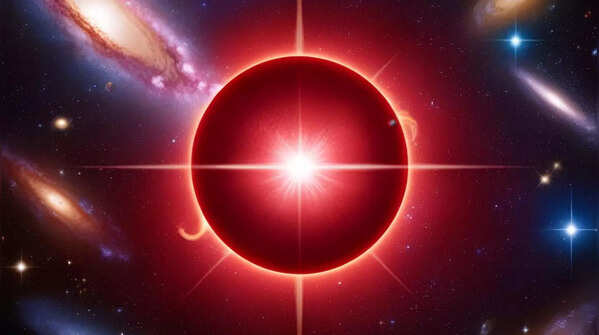5 largest stars in the universe and why they’re so fascinating

5 largest stars in the universe and why they’re so fascinating
We often think of the Sun as incredibly huge, and it is. In fact, you could fit more than a million Earths inside it. But step outside our solar system, and you’ll find stars so massive they make our Sun look surprisingly small.
Over the past few years, astronomers have spotted some truly gigantic stars, thousands of times wider than the Sun. These aren’t just large; they’re rare, short-lived, and often hidden behind thick clouds of gas and dust. But with the help of powerful new telescopes and advanced space technology, scientists are finally able to study these cosmic giants more closely. Here’s a look at five of the biggest stars ever discovered, ranked by their size, and what makes each one so fascinating. Note: This list is based on the data presented by BBC Science Focus. Note: The images in this article were created using Canva AI and are for representative purposes only.

UY Scuti
UY Scuti tops the list as the biggest star ever found. Located around 9,500 light-years away in the Scutum constellation, it's estimated to be more than 1,700 times wider than our Sun– an almost unimaginable size. But size doesn’t mean it’s very hot. UY Scuti is a red supergiant, a type of star that's nearing the end of its life. It’s already losing its outer layers, and scientists believe it could explode or collapse within a few million years.

WOH G64
WOH G64 is another giant star, located in the Large Magellanic Cloud, a small galaxy near ours. It’s about 1,540 times wider than the Sun, making it an enormous red supergiant. What makes this star unique is the thick cloud of dust around it, which hides it from regular telescopes. To study it, scientists use infrared technology, which can see through the dust. This dust is thought to be part of the star’s outer layers, slowly drifting away as the star nears the end of its life.

WOH S170
Also found in the Large Magellanic Cloud, WOH S170 is another massive red supergiant, estimated to be about 1,460 times the size of the Sun. While it hasn’t been studied as closely as some of the other stars on this list, its sheer size makes it stand out.

RSGC1-F01
RSGC1-F01 stands out because it’s located within our own galaxy. Found in a dense star cluster in the Scutum constellation, it’s estimated to be between 1,430 and 1,530 times wider than the Sun. To give you an idea of its size, if it replaced the Sun, its surface would stretch beyond the orbit of Jupiter, according to the Science Focus report. Being part of a crowded cluster, this star gives astronomers a rare chance to study how massive stars live, evolve, and interact with their environment.

HD 269551
HD 269551 is one of the largest stars we know of, measuring around 1,439 times the size of the Sun. Like many red supergiants, it’s unstable and losing mass rapidly. Located in the Large Magellanic Cloud, this star is nearing the end of its life. It's expected to eventually explode in a supernova.








